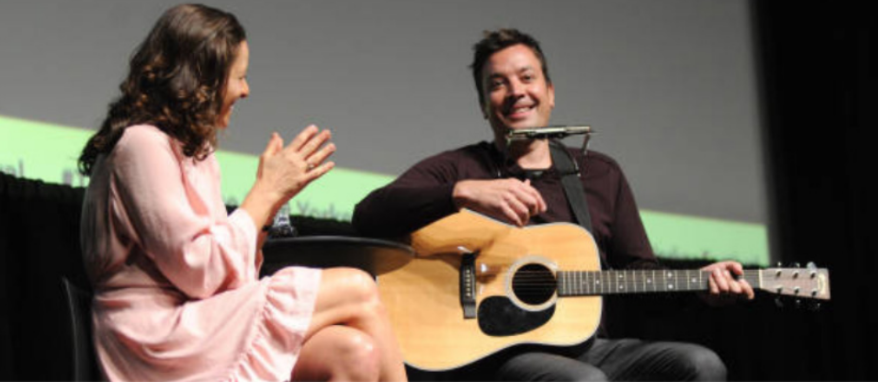Online and hybrid festivals provide a space for artists to learn and to share their work
Jimmy Fallon talks with Ariel Levy about his journey from “Saturday Night Live” to “The Tonight Show” during the 2018 New Yorker Festival. The New Yorker held similar panels virtually for the 2020 festival.
November 25, 2020
As online arts festivals are becoming the “new normal” for artists everywhere, showcases, festivals and arts contests have all taken virtual form, in order to spread participants’ work to all.
One new factor of online festivals is that they are more accessible to participants and viewers. People from all over the world can participate in festivals that were previously only offered in certain areas.
Senior Ravenna Gemignani of Oceanport, explained her experiences with the new accessibility.
“It’s so easy to submit, anyone can do it, it’s open for everyone, and I really like that,” she said.
Gemignani took part in The Summer Arts Space, which is run by Monmouth Arts, submitting pieces titled “Pineapple Guy” and “Colorest Gardens.” She explained that every week a new prompt was listed and anyone could submit a piece of any medium to it.
Senior Anabell Mazzan of Fair Haven, another senior at Communications High School, also took part in The Summer Arts Space. Some pieces that she submitted were “Witch’s Collection” and “Pop up Self Portrait.”
Another festival that was open to all was The New Yorker festival, which took place, entirely online, from Oct. 5-11, 2020.
A few events from the festival that were available to buyers include: Dr. Anthony Fauci talks with Michael Specter and Jerry Seinfeld and Steve Martin. Fiona Apple also performed songs from her new album “Fetch the Bolt Cutters.”
Nevertheless, all online festivals such as these pose problems for viewers who want the more genuine feeling of getting to view art in person. Gemignani discussed the struggles of full virtual events by expressing that art is “really about the experience of seeing the pieces in real life.”
Gemignani also noted the differences between online and in person events.
“When you go to a festival and you see everything there it really stands out,” Gemignani said.
Virtual events cannot replicate the feelings and emotions taken from real life events, as a result many artists are longing for in person festivals, however, with guidelines lifted, festivals are able to hold hybrid events with online and in person events, in order to satisfy all attendants.
The Downtown Brooklyn Arts Festival was one such hybrid festival and took place from Oct.15-18. Similar to the New Yorker festival, events were organized into time and day slots for attendees.
The in person events included music performances by many bands, dance classes, and art galleries. While the online events included virtual music, and a virtual conference with workshops, lectures, and panel discussions.
Although hybrid and all online festivals were created for the time being, this approach to festivals may be a more viable option for the future, as it can showcase live talent to those who wish to attend in person while also catering to those at home.
“Everyone has found really good ways to engage everyone online,” Mazzan said. “I believe incorporating online elements on top of in person events would make it even more accessible for people in this modern age.”




